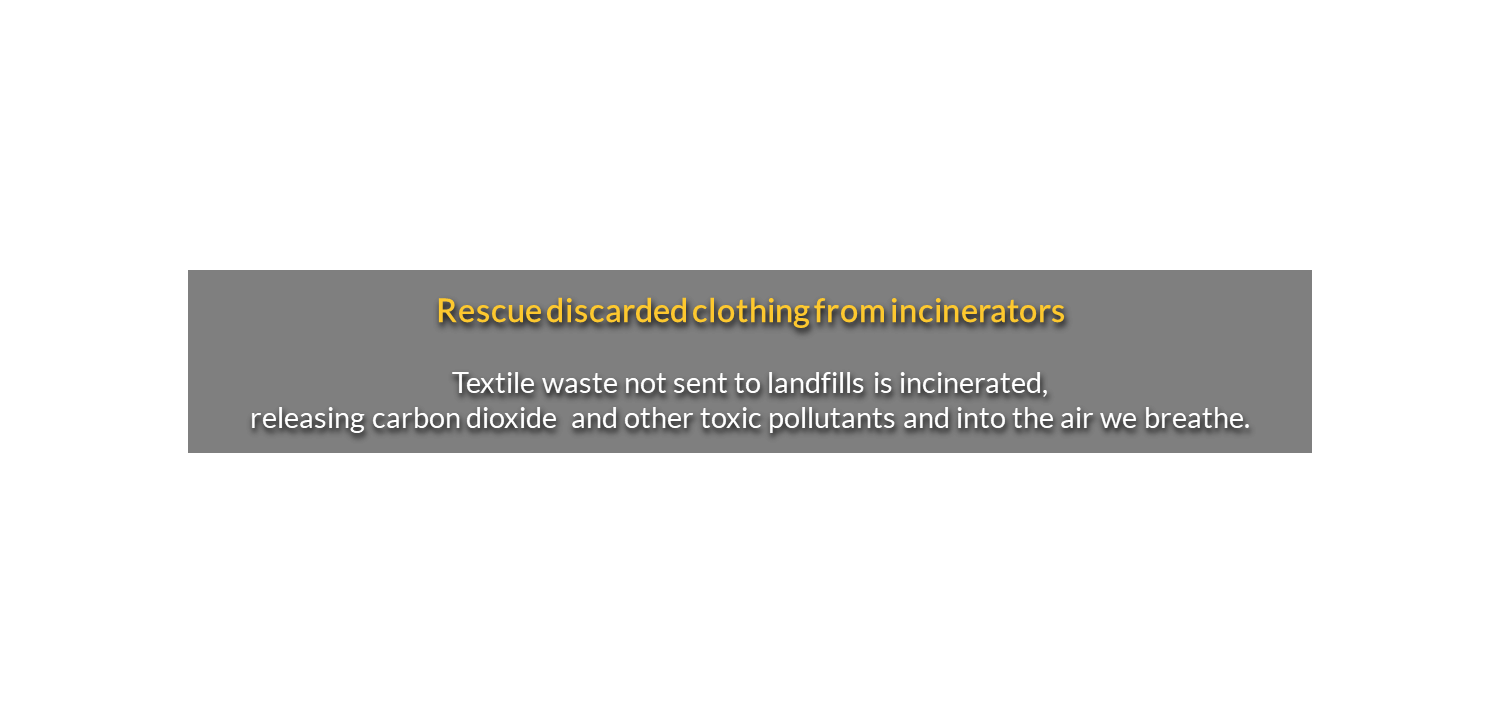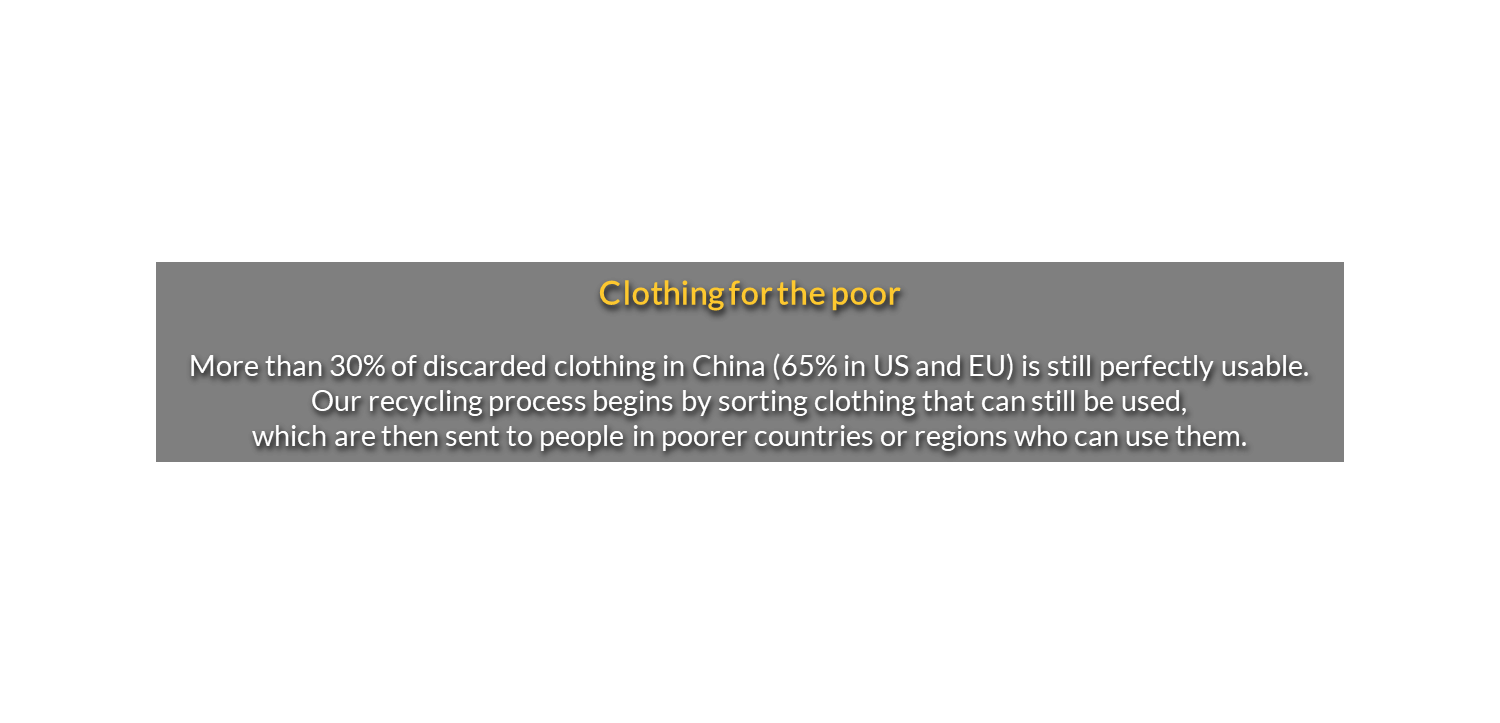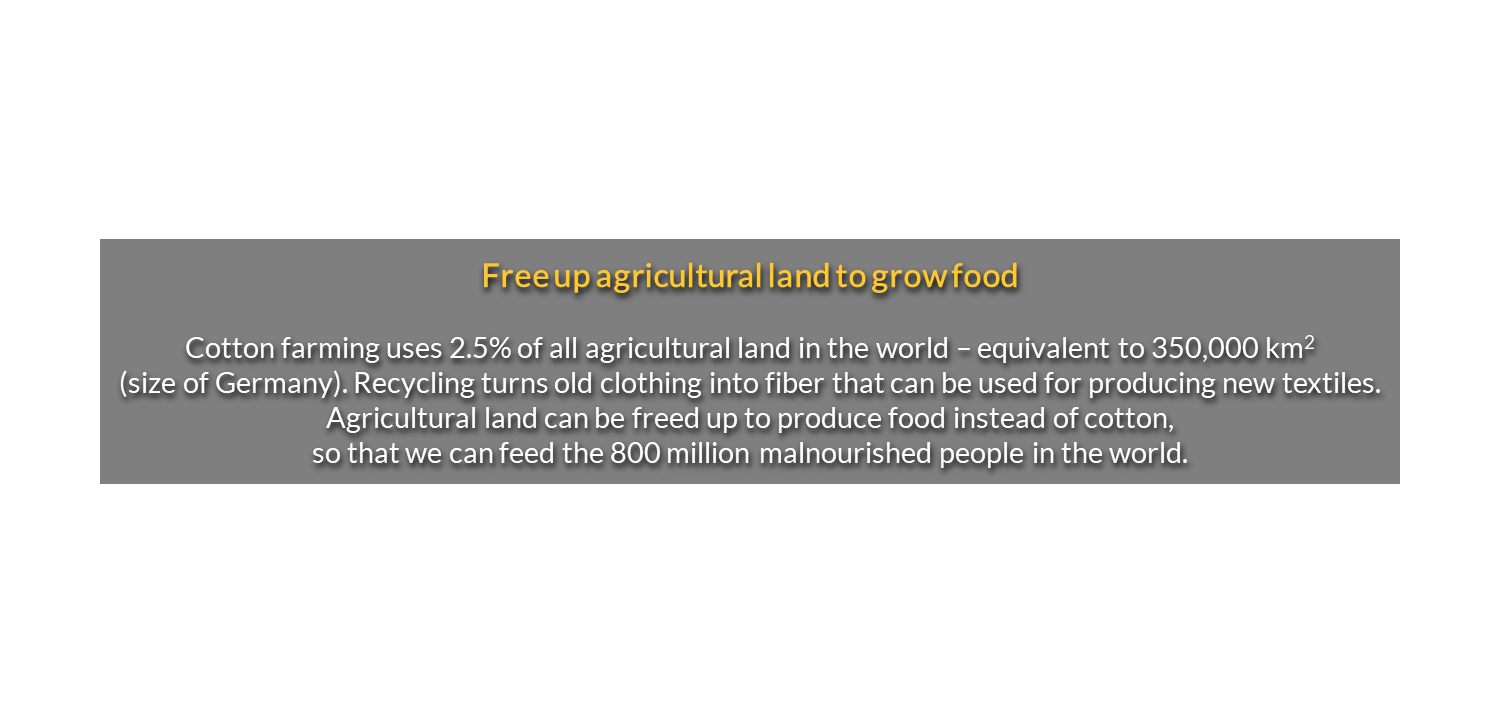Environmental Impact of Textiles
Every year, we generate hundreds of millions of tons of used textiles and shoes in the world.


Benefits of Clothing Recycling






For more information about the Fiber Project, please contact us at fiber@baosquared.com
Every year, we generate hundreds of millions of tons of used textiles and shoes in the world.








For more information about the Fiber Project, please contact us at fiber@baosquared.com